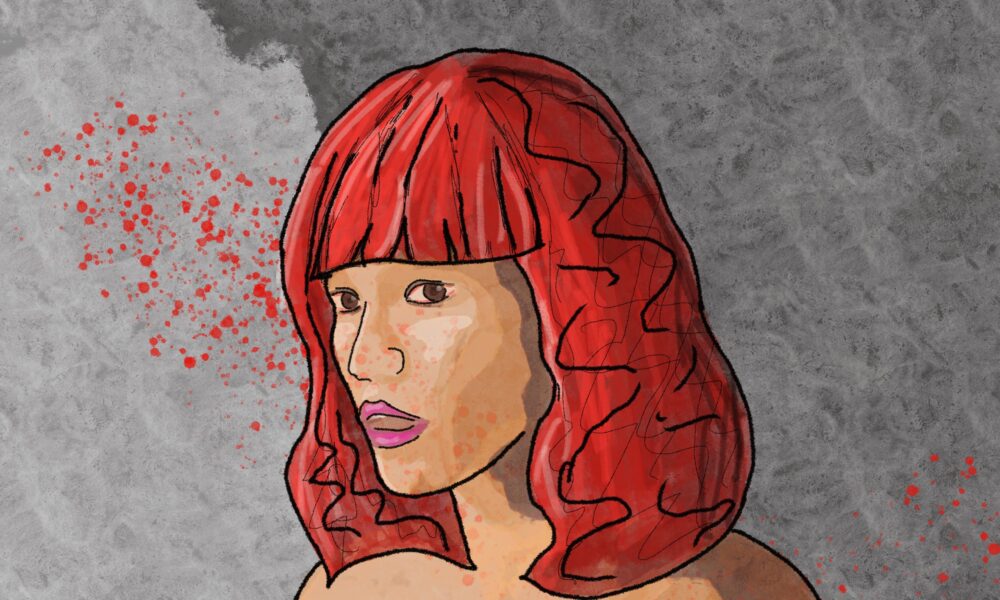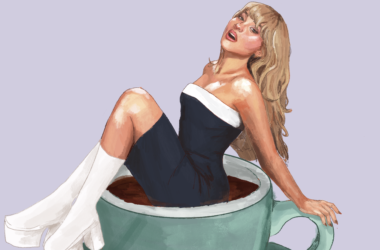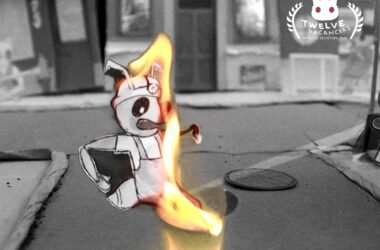Content warning for sexual violence and violent content. Contains Spoilers for Strange Darling.
With an endorsement from The Haunting of Hill House creator Mike Flanagan on its poster, JT Mollner’s latest film, Strange Darling, is receiving high praise from Stephen King and critics as a shocking and brilliant new thriller. It follows two characters named in the opening sequence as “The Lady” (Willa Fitzgerald) and “The Demon” (Kyle Gallner) who play a cat-and-mouse game after a one-night stand turns into an unidentified serial killer’s latest spree. While the film has unique stylistic elements and strong acting by the leads, the twist left a feeling of discomfort as it played out to the end.
Strange Darling begins by announcing that it was shot entirely on 35mm film. Its most notable stylistic aspect is that the story is broken up into six parts, shown non-linearly. It starts with Part 3: We see “The Lady” running through a field for her life as a cover of “Love Hurts” by Z Berg plays, clearly referencing the deadly turn their potential relationship has taken. The fragmented storytelling purposely confuses the audience as the first two parts immediately follow, starting violently with no build-up. As evidenced by the name “The Demon” and the loud, ominous score that accompanies his onscreen appearances, the audience is led to believe that he is the serial killer.
Despite the promise of a shocking twist, it was no shock to me that Fitzgerald’s character was the serial killer instead. By watching the one-night stand unfold, we see their kinky dynamic progress as her sexual desires turn darker. A shot from the film’s opening of “The Demon” choking her is recontextualized when it is revealed that she requested and encouraged this violent act. The film could have delved deeper into the kink aspect of a budding relationship like the films Secretary and Sanctuary. Instead, in a typical femme-fatale act, “The Lady” uses “The Demon’s” sexual desire for her to incapacitate him with drugs and attempts to murder him after finding out he is a cop. The cat-and-mouse game ensues as he gets away and then hunts her down.
My distaste for Strange Darling was strongly shaped by the final parts of the film and the dangerous message they convey. As “The Lady” finally kills her target, the cops show up and a troubling scene emerges. She pulls down her pants and falsely claims that “The Demon” raped her in an attempt to get away. The female cop immediately believes her claims while the male cop has doubts despite the violent scene she shows. After the revelation that Fitzgerald is the serial killer “The Electric Lady,” the cop’s initial disbelief of a self-proclaimed sexual assault survivor is proven right.
However, only a small percentage of rape allegations are false, which raises the question of why this was included if not to be used as a fearmongering example of a vindictive woman. In what could have been a compelling film about a female serial killer, the film chooses instead to play on unfounded fears of men who feel unease about the #MeToo movement. This male fantasy of a lying woman being punished is clear when the film ends with her apparent death.
While Strange Darling stands out among recent horror films for its inventive structure and gorgeous cinematography, the misogynistic tones of the ending sequence left me feeling troubled. “The Electric Lady” is not given enough backstory to make her a compelling character—though Willa Fitzgerald does much heavy lifting with her powerful acting skills, especially when she realizes that she has truly been caught. In 2024, a film’s final message should not translate to “women can lie, too”—especially when concerning sexual violence.
Strange Darling is now playing at Cinema du Parc.








